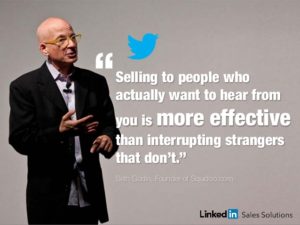Common sense seems to dictate that your marketing efforts must connect with potential customers or it is useless. Many small companies believe their marketing is, indeed, making that connection. But is it really? Is it driving customers to you? Is it enabling conversions? In some recently published research, Salesforce has discovered what is really working and what just may be a waste of your time and resources. The following is taken directly from that published research:
- With unprecedented choice and access to information, today’s customers demand an overall experience that matches their standards for product quality. 80% of customers say the experience a company provides is as important as its products and services.
- Marketers’ top challenges stand directly in front of their objectives. Marketers are struggling to adapt to customers’ rising expectations for a new level of engagement, and wrangling the technologies and data
insights they need to make it possible. Fewer than half (49%) of marketing leaders believe they provide an experience completely aligned with customer expectations. - High-performing organizations stand apart by embracing strategies that consider customers’ entire journeys, and therefore enable truly personalized engagement. These same high-performing marketers have managed, to a much a greater degree than their competitors, to foster collaborative relationships across their organizations, effectively apply customer data, and ultimately engage their customers and prospects in real time. 56% of high-performing marketers are actively mapping the customer journey across the company, compared to 42%.
- Marketers have a unique perspective of customer needs, behaviors, and trends. As such, nearly half (45%) of marketing leaders say their organization is leading customer experience initiatives across the business. Among high-performing teams, this figure rises to 54%. To operate successfully in this new day and age, marketers are fundamentally rethinking how they work both within and outside of their traditional purviews. Nearly two thirds (62%) of marketing leaders say that individuals and teams within their organization are more aligned with each other than ever before.
- Today, advertising teams are joining the wider marketing fold. In fact, 87% of marketing teams with internal advertising colleagues share integrated technology stacks, underscoring the importance of unifying data to create the right experience on the right channel at the right time.
- Fifty-five percent of marketing teams collaborate with advertising teams when evaluating new technology. But technology alignment is the tip of the iceberg, with marketers and advertisers also aligning their overall objectives and resources. Sixty-one percent of marketers share common goals and metrics with their advertising colleagues, and more than half share a single brand or creative team.
- Sales and marketing alignment is hardly a new concept. But as increasingly sophisticated customer experiences elevate consumers’ expectations, standards are rising for business purchases, too. Therefore, it’s critical for all sales and marketing to march in tandem. A slight majority of marketing teams with direct selling models now share common goals and metrics with their sales colleagues. A similar number enjoys a free and open flow of customer data between the teams. Although marketers’ focus on a unified customer view theoretically puts account-based marketing (ABM) strategies within reach, they remain the exception to the rule. High performing marketers are 1.5x more likely than underperformers to collaborate with sales teams on ABM programs. 69% of business buyers expect Amazon-like buying experiences — such as personalized recommendations.
-Written by Kevin Sawyer



